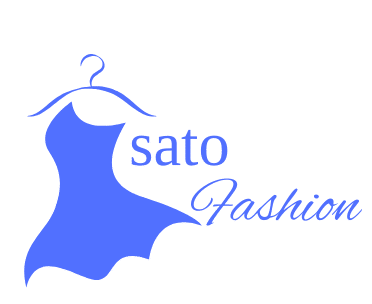Leather has always been a material that inspires creativity and durability. From ancient civilizations to modern-day artisans, hides have been transformed into garments, accessories, and furniture that stand the test of time. One particular concept within this tradition is Zuschneidfelle—a German term that translates to “cut hides.” At first glance, it may appear to simply describe leather that has been cut for use. Yet, Zuschneidfelle represent much more than just material; they symbolize precision, craftsmanship, and careful selection that elevate leatherworking into an art form.
This article delves deeply into the fascinating world of Zuschneidfelle. We will explore their origins, processing, applications, and significance for artisans and industries alike. By the end, you will understand why these precision-crafted leather cuts are highly valued and how they continue to shape craftsmanship today.
The Meaning Behind Zuschneidfelle
The German word itself reveals much about its essence. “Zuschneiden” means to cut, while “Fell” translates to hide. Put together, Zuschneidfelle refers to hides that have been meticulously cut and prepared for specific applications. Unlike raw hides, which require extensive preparation, Zuschneidfelle are already treated, shaped, and ready to be worked with.
This process of precision cutting ensures that the material meets certain standards in terms of thickness, texture, and finish. The result is leather that does not just serve as material but as a carefully tailored component of craftsmanship.
From Hide to Zuschneidfell: The Process
The journey of Zuschneidfelle begins with raw hides, usually sourced from animals such as sheep, goats, or cows. Transforming these hides into high-quality, cut-ready leather involves several crucial stages:
- Cleaning and Preservation – Fresh hides are thoroughly cleaned to remove impurities. Preservation techniques, such as salting or chemical treatment, prevent decay and maintain the leather’s integrity.
- Tanning – This is the stage where hides are stabilized and made durable. Both vegetable tanning and chrome tanning are commonly used, depending on the desired properties of the final leather.
- Selection – Artisans or manufacturers choose hides based on qualities such as softness, grain, flexibility, and durability. For example, sheep hides are often chosen for garments due to their lightweight softness, while cowhides are favored for upholstery because of their sturdiness.
- Precision Cutting – This is where Zuschneidfelle truly take form. The leather is cut into specific dimensions, ensuring minimal waste and maximum usability. Each cut is designed with its future purpose in mind, whether for a handbag, a pair of gloves, or a piece of furniture.
- Finishing – Depending on the intended application, Zuschneidfelle may be dyed, embossed, or given specific surface treatments. Smooth finishes suit fashion items, while textured surfaces are perfect for upholstery or decorative projects.
Types of Zuschneidfelle
Zuschneidfelle are not a one-size-fits-all material. They vary greatly depending on the hide, the cut, and the treatment applied. Below are some of the most common types:
- Sheep Leather Zuschneidfelle – Known for softness and lightness, ideal for gloves, garments, and delicate accessories.
- Cow Leather Zuschneidfelle – Durable and strong, often used in upholstery, shoes, and belts.
- Goat Leather Zuschneidfelle – Flexible with a fine grain, making it excellent for detailed craftsmanship.
- Genuine Leather Zuschneidfelle – Valued for its natural look, durability, and ability to develop a patina over time.
Each type offers unique properties, allowing artisans to choose the most suitable material for their project.
The Role of Zuschneidfelle in Craftsmanship
For artisans, Zuschneidfelle are more than just leather—they are a starting point for creativity. Because these pieces are already precision-cut, they reduce preparation time and enable crafters to focus on design and execution.
- Fashion Industry: Designers rely on Zuschneidfelle for bags, shoes, belts, and clothing. The consistency and quality of these leather cuts provide a stable foundation for high-fashion creations.
- Furniture and Upholstery: The durability and texture of Zuschneidfelle make them perfect for restoring or crafting furniture. A well-chosen leather cut can transform an old chair into a statement piece.
- Accessories: Small leather goods, such as wallets and gloves, benefit from the fine finishes available in Zuschneidfelle.
- DIY Crafting: Even hobbyists appreciate the convenience of ready-to-use leather, which makes small projects more approachable.
Advantages of Zuschneidfelle
Why do artisans prefer Zuschneidfelle over untreated hides? The answer lies in several clear advantages:
- Ready for Use – No need for extensive preparation or cutting from large, unwieldy hides.
- Consistency – Precision cutting ensures uniformity in size and quality.
- Versatility – Available in different finishes, thicknesses, and textures.
- Time-Saving – Speeds up the crafting process for both professionals and beginners.
- Aesthetic Appeal – Treated and cut leather maintains a polished look that enhances any project.
Working with Zuschneidfelle: Practical Tips
For those new to leatherworking, Zuschneidfelle can be an excellent entry point. To achieve the best results, keep these tips in mind:
- Always use sharp cutting tools such as rotary cutters or utility knives to maintain clean edges.
- Work on a stable surface like a cutting mat to avoid damaging your workspace.
- Pay attention to the grain and texture of the leather before choosing its purpose. Smooth finishes suit sleek garments, while textured pieces add character to upholstery.
- Store Zuschneidfelle in a cool, dry environment to preserve their quality.
Ethical and Sustainable Considerations
Leather production has long faced questions about environmental and ethical impact. Zuschneidfelle, while crafted with precision, are not immune to these concerns. Issues such as deforestation, water use, and animal welfare are important to consider.
Today, many suppliers and artisans are moving toward responsibly sourced hides and eco-friendly tanning processes. Consumers can play a role by seeking transparency in sourcing and supporting sustainable practices. Zuschneidfelle crafted with such awareness combine tradition with responsibility.
FAQs About Zuschneidfelle
Q1: What makes Zuschneidfelle different from regular leather?
A1: Zuschneidfelle are precision-cut and pre-treated hides, ready for immediate use, whereas regular leather often requires extensive preparation.
Q2: Which type of Zuschneidfelle is best for clothing?
A2: Sheep leather Zuschneidfelle are ideal because they are soft, lightweight, and elegant.
Q3: Can beginners use Zuschneidfelle for DIY projects?
A3: Yes, they are excellent for beginners since they save preparation time and provide consistent quality.
Q4: How do I maintain Zuschneidfelle?
A4: Store them in a dry, cool place and avoid direct sunlight. Conditioning may also help maintain flexibility.
Q5: Are Zuschneidfelle sustainable?
A5: While traditional leather production has environmental impacts, sustainable practices and responsibly sourced hides are making Zuschneidfelle more eco-friendly.
Conclusion
Zuschneidfelle embody the perfect balance between tradition and innovation. Rooted in centuries of leatherworking expertise, these precision-cut hides continue to inspire artisans and industries today. From fashion to furniture, their versatility, durability, and aesthetic qualities make them indispensable. At the same time, ongoing conversations around sustainability remind us that craftsmanship must evolve responsibly.
For anyone working with leather—whether professional or beginner—understanding Zuschneidfelle is a gateway to both practical knowledge and artistic potential. They are not just materials but an expression of skill, quality, and timeless design.

